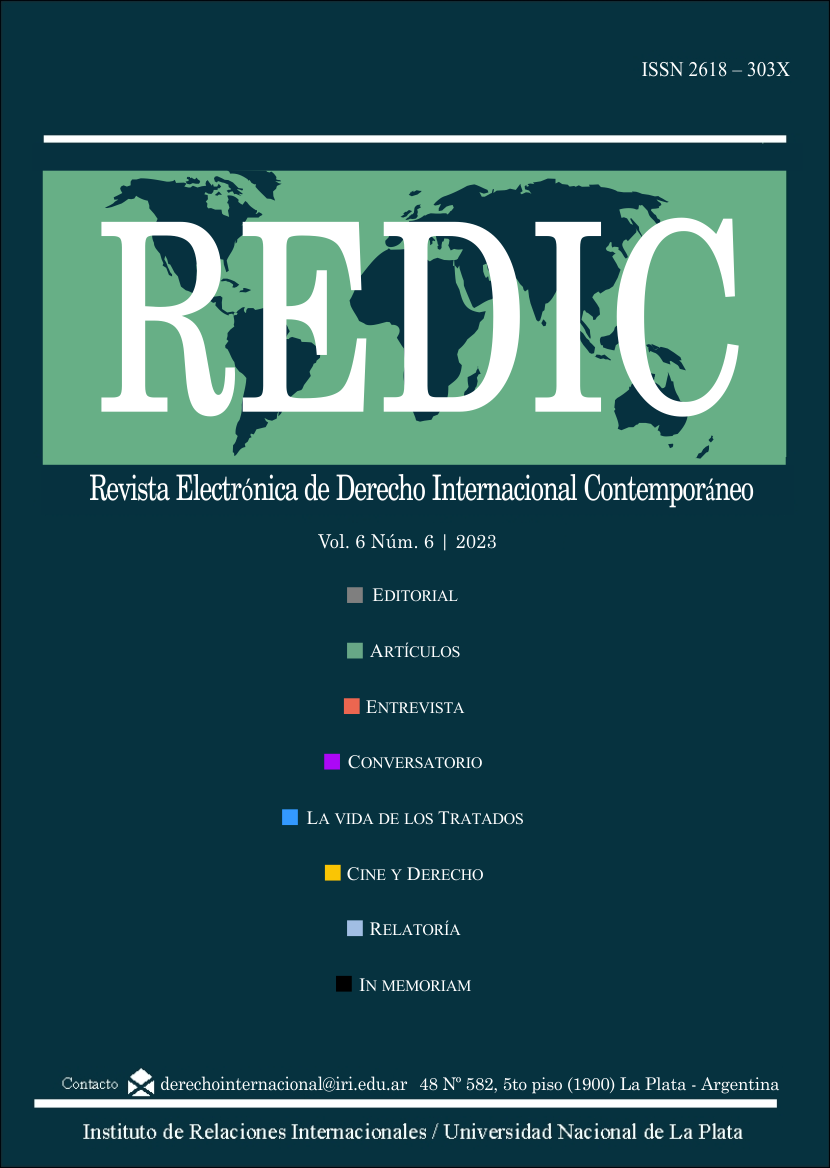Eye in the Sky
Counter-terrorism operations under international law
DOI:
https://doi.org/10.24215/2618303Xe047Keywords:
Collective security, Self-defence, terrorist groups, right to lifeAbstract
This article analyzes the film "Eye in the Sky" from the perspective of international law, specifically the relevant norms applicable to armed conflicts and the protection of the right to life in the fight against terrorism, focusing on the legality of targeted killings. The film depicts a fictional event in the 2010s where an Anglo-American force pursues members of a terrorist group in Africa and decides to launch an armed attack using drones and computers, facing a tense situation when a girl enters the targeted area.
Downloads
References
Bantekas, I. y Oette L. (2020). International Human Rights Law and Practice (3ª ed.). Cambridge University Press.
Comisión Interamericana de Derechos Humanos. (2002). Informe sobre Terrorismo y Derechos Humanos. http://www.cidh.org/terrorism/span/c.htm
Consejo de Derechos Humanos de las Naciones Unidas. (2010). Report of the Special Rapporteur on extrajudicial, summary or arbitrary executions, Philip Alston. Addendum, Study on targeted killings. UN Doc A/HRC/14/24/Add.6 https://digitallibrary.un.org/record/685887?ln=es
Schmid, A. (2023). Defining Terrorism. International Centre for Counter-Terrorism. https://www.icct.nl/publication/defining-terrorism
Additional Files
Published
How to Cite
Issue
Section
License
Copyright (c) 2023 Gabriel Anich Sfeir

This work is licensed under a Creative Commons Attribution-NonCommercial-ShareAlike 4.0 International License.
Aquellos autores/as que tengan publicaciones con esta revista, aceptan los términos siguientes:
- Los autores/as conservarán sus derechos de autor y garantizarán a la revista el derecho de primera publicación de su obra, el cuál estará simultáneamente sujeto a la Licencia de reconocimiento de Creative Commons (BY-NC-SA) 4.0 que permite a terceros compartir la obra siempre que se indique su autor y su primera publicación esta revista, no se haga uso comercial, y si se remezcla, se transforma o se crea a partir del material, se debe distribuir bajo la misma licencia del original.
- Los autores/as podrán adoptar otros acuerdos de licencia no exclusiva de distribución de la versión de la obra publicada (p. ej.: depositarla en un archivo telemático institucional o publicarla en un volumen monográfico) siempre que se indique la publicación inicial en esta revista.
- Se permite y recomienda a los autores/as difundir su obra a través de Internet (p. ej.: en archivos telemáticos institucionales o en su página web) antes y durante el proceso de envío, lo cual puede producir intercambios interesantes y aumentar las citas de la obra publicada. (Véase El efecto del acceso abierto).





















